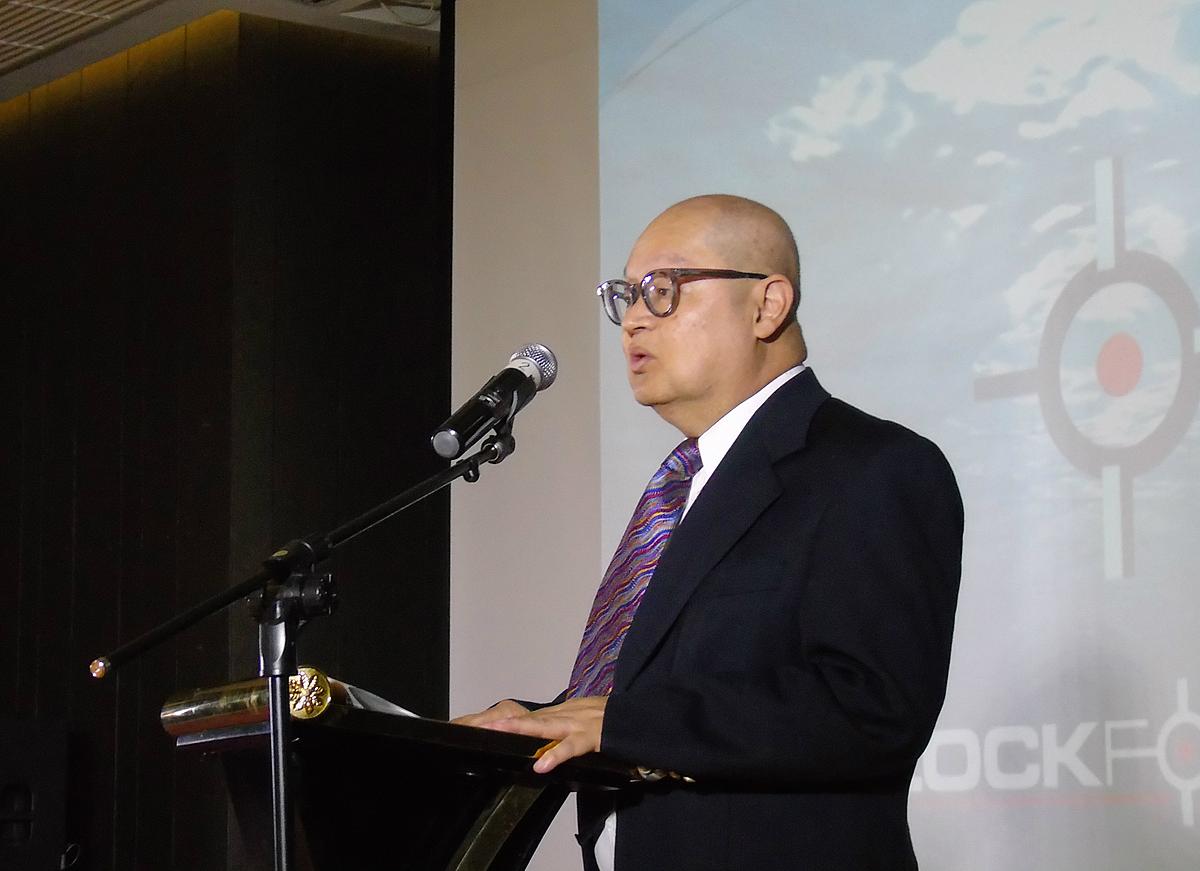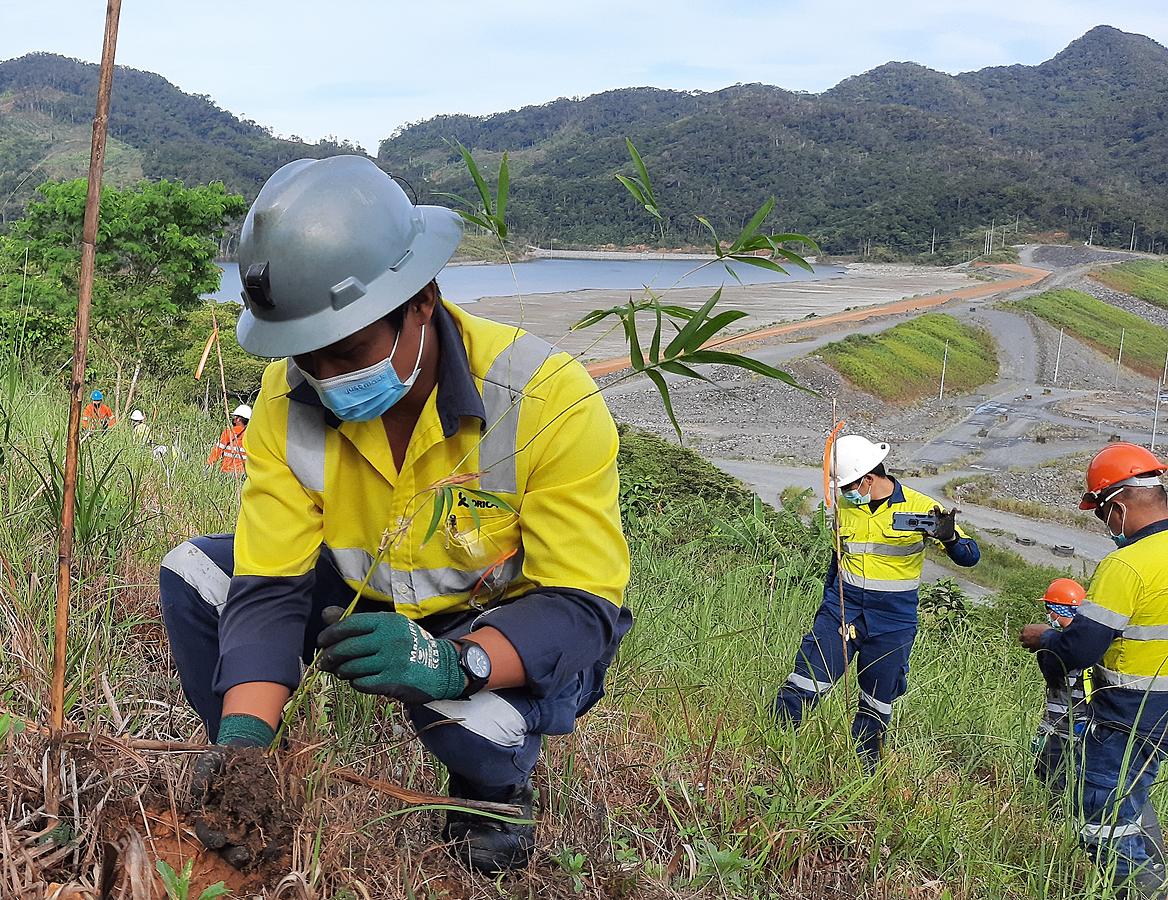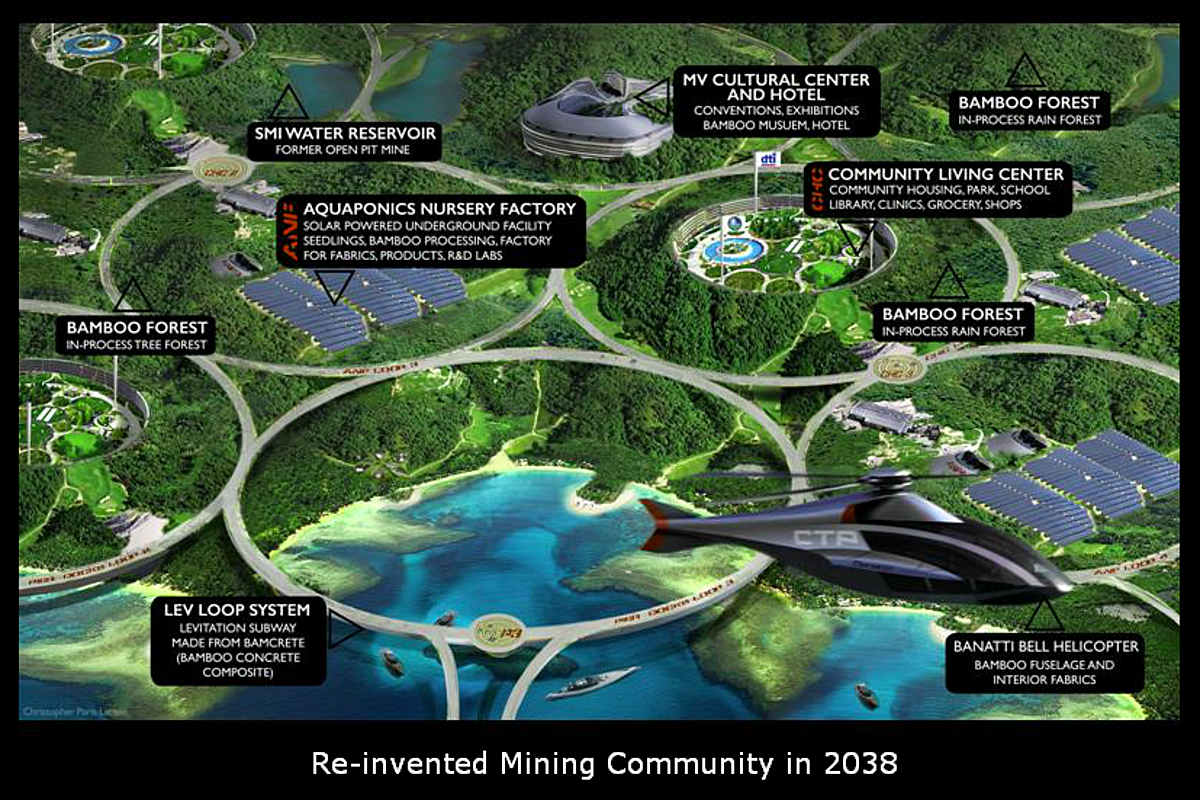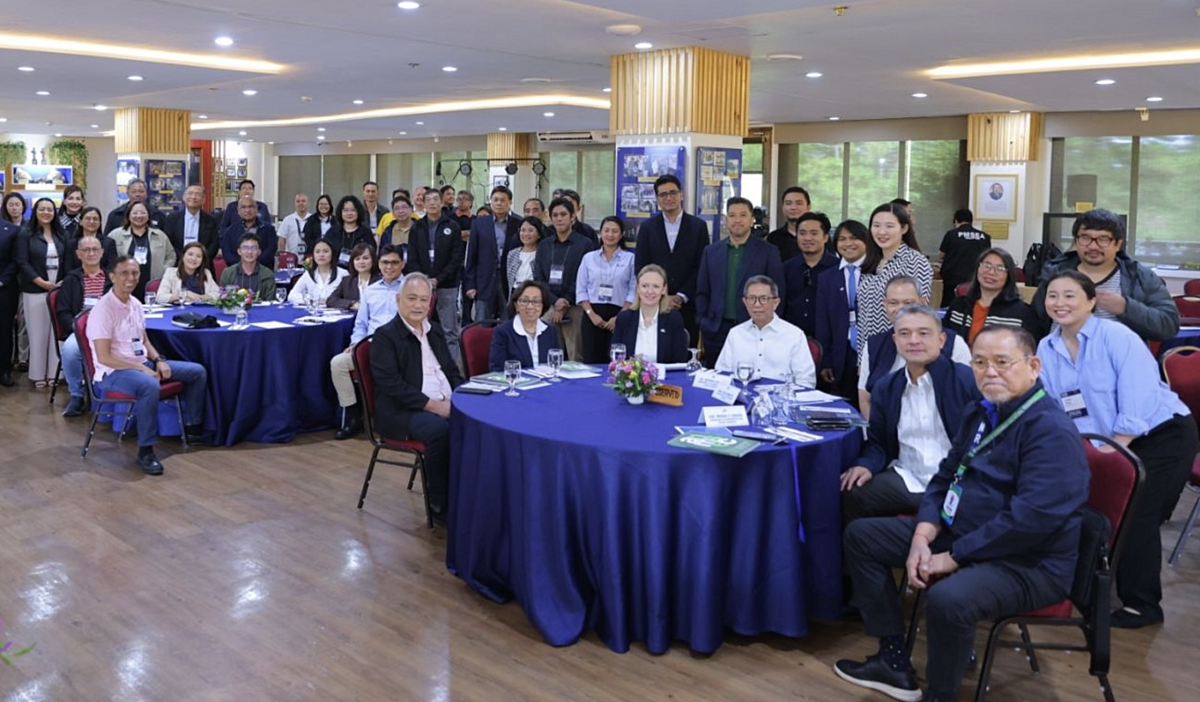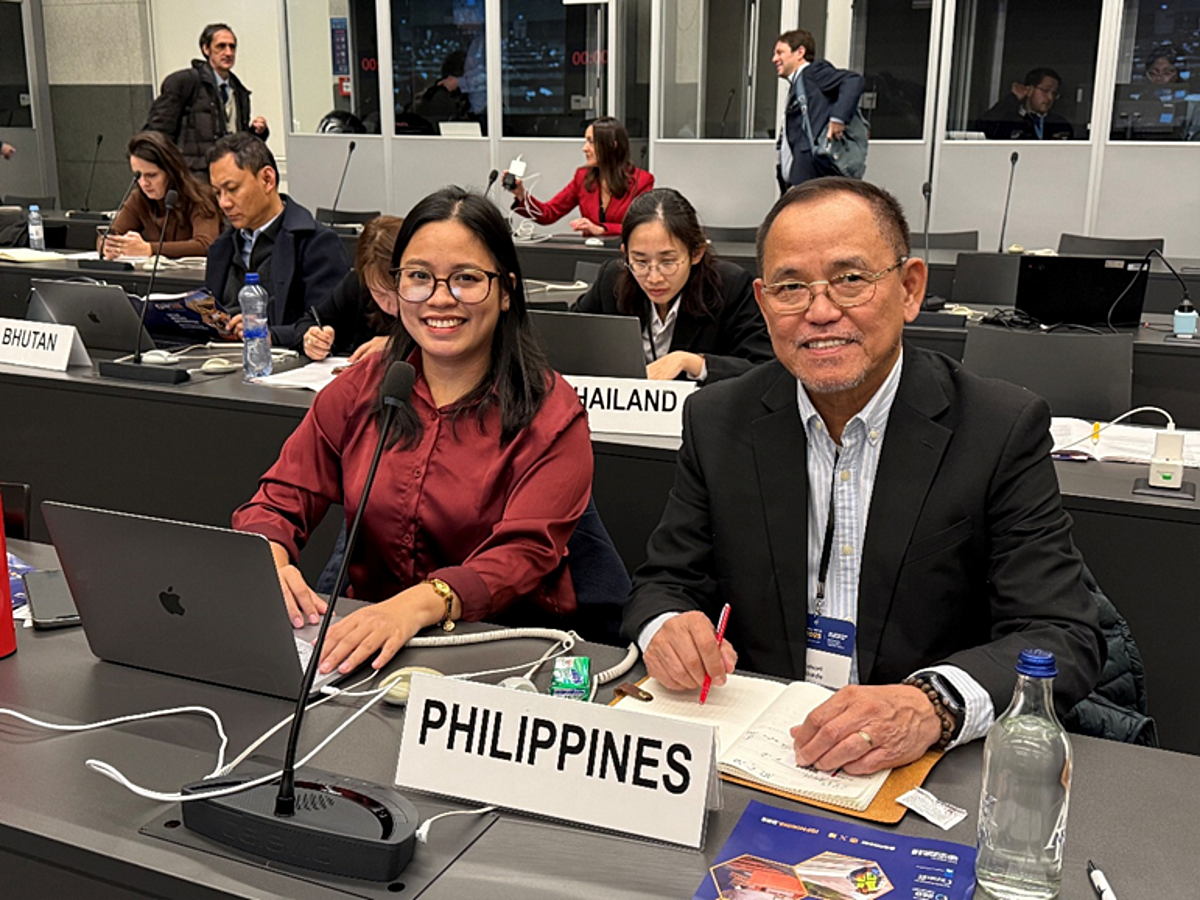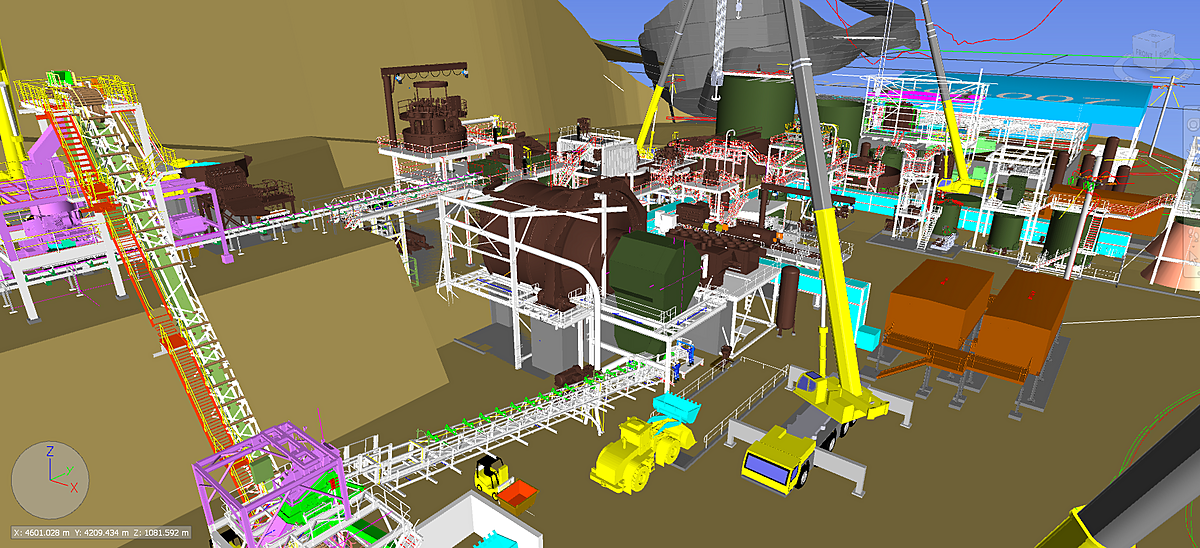Mr Leo Dominguez of OLLI Consulting Group, Inc. during the Philippine Mining Club Luncheon [Photo by Marcelle P. Villegas]
3 May 2019 - During Philippine Mining Club at I’M Hotel, Makati City, Mr Leo Dominguez presented updates on his Bamboo Initiative, an advocacy which he started with the support of other mining companies and assoc. Mr Dominguez is the President of OLLI Consulting Group, Inc. and flamboyant Masters of Ceremonies in Philippine Mining Club events.
During the recent PMC event, he stated, “If you were here on June 8, 2018 you will recall that we had this speaker from our Department of Environment and Natural Resources, Secretary Cimatu, where he spoke to us about reinventing mining. And during that presentation of his and in the ‘Question and Answer’ period after that, we started a conversation around bamboo.”
“I'd like to report that that conversation has actually led to some developments. The first development after that was the participation of the mining industry in the FAME exhibition in November (2018) where bamboo products were put forward as part of the exhibit in a pavilion that was funded, thank you, by the Chamber of Mines of the Philippines as well as the Philippine Nickel Industry Association to the tune of PHP1.6 million. And it is in that FAME exhibition that the collaboration amongst the Department of Trade and Industry, the DENR, and the mining industry was first told. So we expect that FAME every year will repeat the story of that collaboration as it improves.”
Furthermore, he said, “Now, beyond that in April this year, the Secretary of the Department of Environment and Natural Resources, Cimatu, hosted a meeting with the DTI Secretary, the mining industry as well as his staff responsible for bamboo. So I'd like to refer to it as a bamboo initiative and it was in that very well-attended meeting that the next steps of the bamboo initiative with the mining industry were discussed.”
“So our next move will be a technical working group that will deal with the regulations and all that need to be tweaked to really make bamboo a greening material for the mining industry as we go forward.”
The meeting which Mr Dominguez was referring to took place on 2nd April 2019 where OLLI Consulting Group, Inc. with DENR, DTI and mining companies and its stakeholders discussed the potential of bamboo in “reinventing mining”. OLLI Consulting Group, Inc. has a CSR component called “OLLI Cares” which supports the “Tanging Tanglaw” Project of Diwata-Women in Resource Development, Inc. (For more information about OLLI Cares and “Tanging Tanglaw Project”, please visit their webpage at https://olli.ph/olli-cares.)
In that meeting with Secretary Cimatu and DTI Secretary Ramon Lopez, Mr Dominguez started the session by explaining the importance of bamboo. He said “Aptly called the Bamboo Initiative, this endeavor seeks to create a synergy between the government and the private sector on how to effectively harness the power and potential of this grass for the revegetation and rehabilitation of mine sites across the country.”[1]
The following were present in that meeting [1] :
~ Philex Mining Corporation - Eulalio Austin
~ Marcventures Mining & Development Corporation - Isidro ‘Butch’ Alcantara Jr.
~ Filminera Resources Corporation - Gloria Tan Climaco
~ OceanaGold Philippines, Inc. - Jose ‘Joey’ Leviste, Jr.
~ The Chamber of Mines’ (COMP) Executive Director Atty. Ronald Recidoro
~ Philippine Nickel Industry Association’s (PNIA) Executive Director Charmaine Olea-Capili
~ Mine & Geosciences Bureau (MGB) - Mine Safety, Environment and Social Development Division Engr. Rodolfo L. Velasco, Jr.
~ DENR’s Forest Management Bureau (FMB) Director - Lourdes Ferrer
~ Ecosystems Research and Development Bureau’s (ERDB) - Bighani Manipula and Angelito Exconde
~ Biodiversity Management Bureau’s (BMB) - Juvy Ladisla
~ OLLI Consulting Group - Christopher Paris Lacson, Steve Araneta and Maria Paula Tolentino
- - -
Now, going back to the PMC event, Mr Dominguez said, “As you all know, the whole idea is the bamboo will also be the material that the communities on whom your SDMP funds are being spent will be taught to work with the bamboo. The result will be implementing the DTI's roadmap for the development of the bamboo industry. This will generate livelihoods and hopefully more than that -- real enterprises involving our mining communities.”
“So one day, we hope to say that when visitors do come to the mining companies, the first protocol will be the community, seeing how hard they are working, products that are going to export market, and so on. And you, mining companies, will be able to tell your visitors that the mine over there is what makes it possible.”
“So ladies and gentlemen, at the end of the day, with bamboo we have the opportunity to reinvent mining and then mining will now be defined as follows: The success of a mining company will no longer be judged simply by how profitable or how responsible the mining company is, but it will also be judged by how successful it makes its mining communities.”
Finally, he concluded, “Therefore, mining reinvented, thanks to bamboo, will mean that mining is also a social enterprise. We'd like to see where that is going. Ladies and gentlemen, with your help and continuing support for this initiative, we hope to change the conversation about mining and therefore make that conversation speak of it as a social enterprise as well. You will hear more about this as the developments take place.“
- - -
Reference:
[1] Tolentino, Maria Paula (27 April 2019). "OLLI Cares spearheads the Bamboo Initiative". SEMScribe Publishing
- - -
Acknowledgement:
Mr Leo Dominguez and Ms Maria Paula Tolentino

